 While reviewing recent images this week, I came across several that caught my attention and that I had not previously included on my website or blog. The images were taken at sunset in early January this year from the viewing platform at the end of La Chua Trail on Paynes Prairie Preserve State Park in Florida. As you can tell from the images, it was an incredibly beautiful and colorful sunset, and making it more memorable was the arrival of small groups of Sandhill Cranes.
While reviewing recent images this week, I came across several that caught my attention and that I had not previously included on my website or blog. The images were taken at sunset in early January this year from the viewing platform at the end of La Chua Trail on Paynes Prairie Preserve State Park in Florida. As you can tell from the images, it was an incredibly beautiful and colorful sunset, and making it more memorable was the arrival of small groups of Sandhill Cranes.
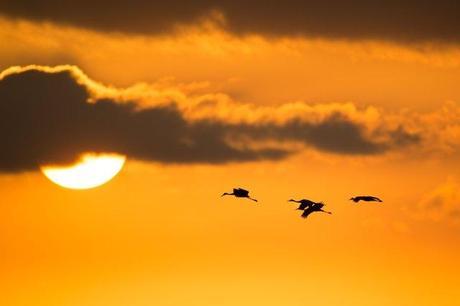
Thousands of Sandhill Cranes winter in Florida, many at Paynes Prairie Preserve State Park. The cranes roost on the Prairie’s wetlands at night for safety from predators. At sunrise most of the cranes fly to nearby fields where they feed, although they also find food on the Prairie. Sandhill Cranes are omnivorous and feed on land or in shallow marshes. Their diet predominantly consists of seeds, berries, tubers, small vertebrates, and invertebrates.
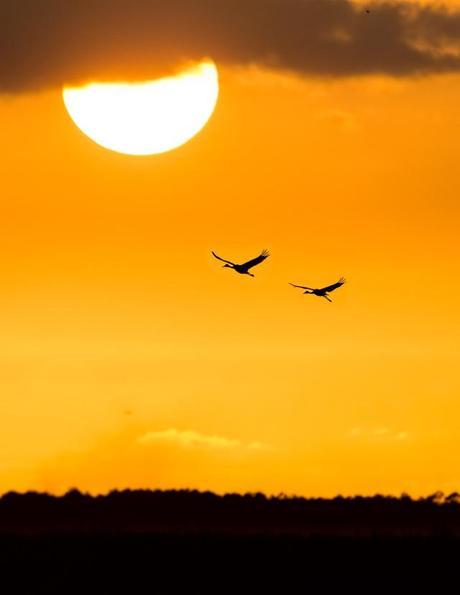
Sandhill cranes mate for life and live for well over twenty years. The oldest known Sandhill Crane lived 36 years and 7 months, which was determined by its band. Although some cranes start breeding at two years of age, some may reach the age of seven before breeding. Juvenile cranes stay close by their parents for 9 or 10 months after hatching.
Below, the cranes lower their legs and gracefully land.
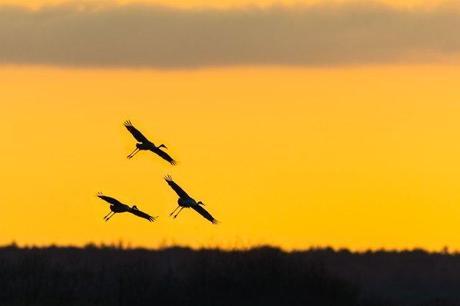
The above images show the cranes in flight against the gorgeous orange sunset, but they do not provide a detailed view of the cranes. Therefore, I have included the below images that I shot last year near Paynes Prairie. Sandhill Cranes with their bright red heads and orange eyes are an example of Nature’s diversity and beauty.
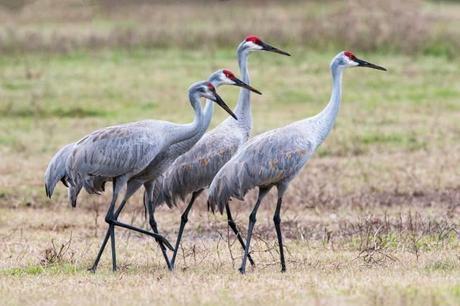
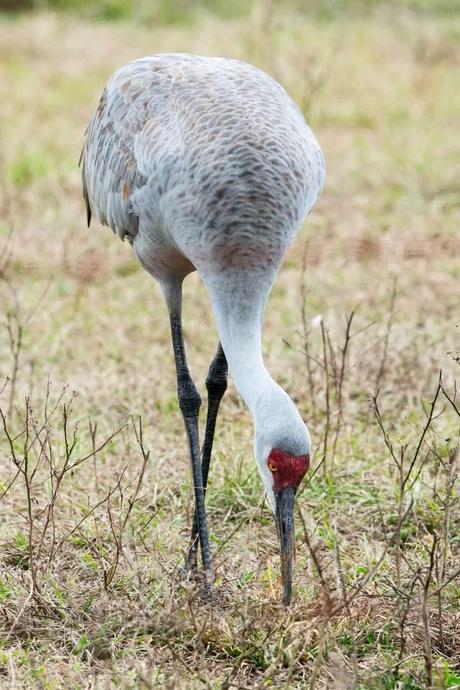

Comments on my blog and this article are appreciated and can be entered by clicking on “Comments” found below the Share this: section. You can also read other’s comments there.
